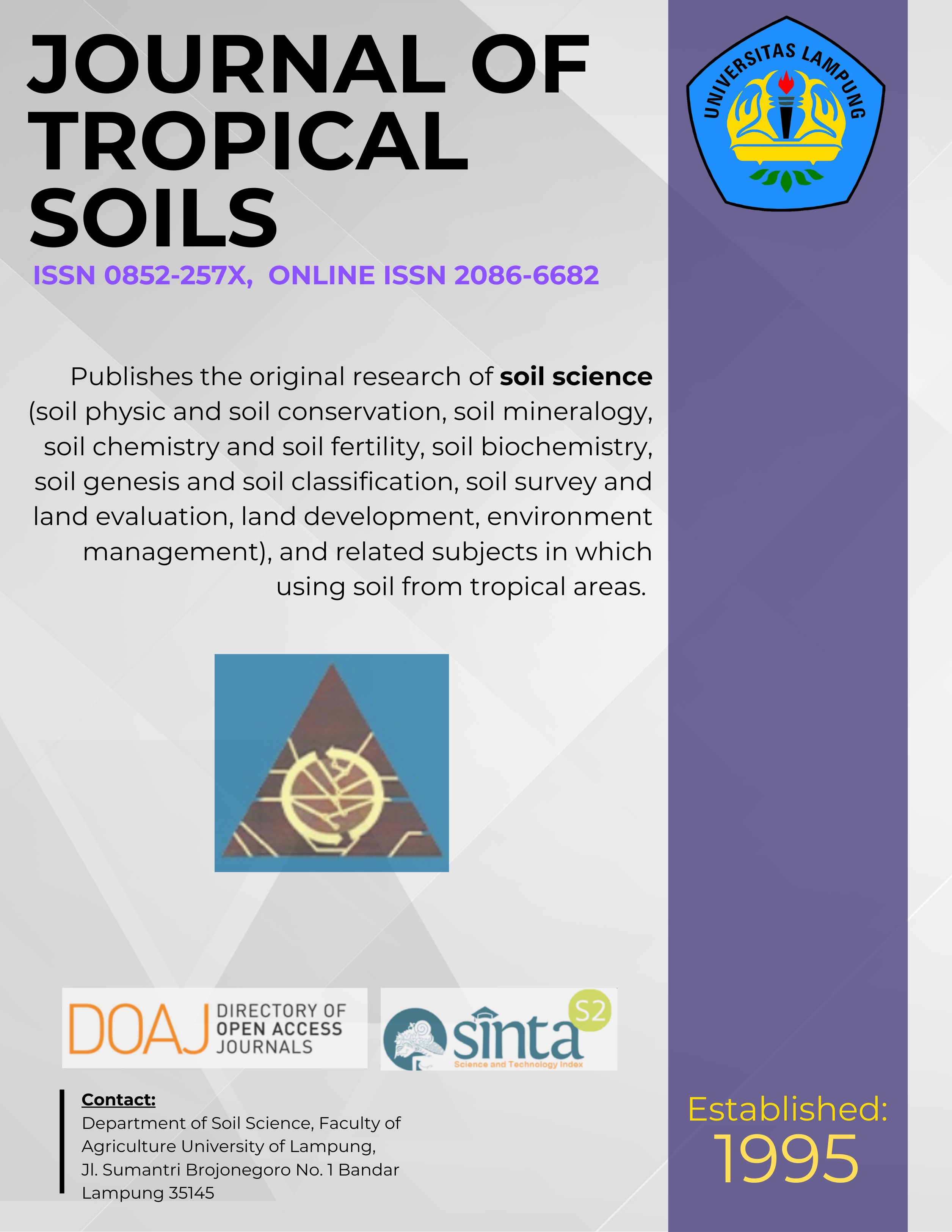Root-induced Changes in the Rhizosphere of Extreme High Yield Tropical Rice: 2. Soil Solution Chemical Properties
Main Article Content
Abstract
Our previous studies showed that the extreme high yield tropical rice (Padi Panjang) produced 3-8 t ha-1 without fertilizers. We also found that the rice yield did not correlate with some soil properties. We thought that it may be due to ability of root in affecting soil properties in the root zone. Therefore, we studied the extent of rice root in affecting the chemical properties of soil solution surrounding the root zone. A homemade rhizobox (14x10x12 cm) was used in this experiment. The rhizobox was vertically segmented 2 cm interval using nylon cloth that could be penetrated neither root nor mycorrhiza, but, soil solution was freely passing the cloth. Three soils of different origins (Kuin, Bunipah and Guntung Papuyu) were used. The segment in the center was sown with 20 seeds of either Padi Panjang or IR64 rice varieties. After emerging, 10 seedlings were maintained for 5 weeks. At 4 weeks after sowing, some chemical properties of the soil solution were determined. These were ammonium (NH4+), nitrate (NO3-), phosphorus (P) and iron (Fe2+) concentrations and pH, electric conductivity (EC) and oxidation reduction potential (ORP). In general, the plant root changed solution chemical properties both in- and outside the soil rhizosphere. The patterns of changes were affected by the properties of soil origins. The release of exudates and change in ORP may have been responsible for the changes soil solution chemical properties.
Keywords: Ammonium, electrical conductivity, iron, nitrate, oxidation reduction potential, pH, phosphorus
[How to Cite: Purnomo E, D Choiron, R Yulia, H Halim, Krisdianto, A Hairani and M Osaki. 2012. Adding Organic Matter Enhanced the Effectiveness of Silicate Rock Fertilizer for Food Crops Grown on Nutritionally Root-induced Changes in the Rhizosphere of Extreme High Yield Tropical Rice: 2. Soil Solution Chemical Properties. J Trop Soils, 17 (3): 67-74. doi: 10.5400/jts.2012.17.3.189]
[Permalink/DOI: www.dx.doi.org/10.5400/jts.2012.17.3.189]
Downloads
Article Details
License for Authors
Authors who publish with this journal agree to the following terms:
- Authors retain copyright and grant the journal right of first publication with the work simultaneously licensed under a Creative Commons Attribution License that allows others to share the work with an acknowledgement of the work's authorship and initial publication in this journal.
- Authors are able to enter into separate, additional contractual arrangements for the non-exclusive distribution of the journal's published version of the work (e.g., post it to an institutional repository or publish it in a book), with an acknowledgement of its initial publication in this journal.
- Authors are permitted and encouraged to post their work online (e.g., in institutional repositories or on their website) prior to and during the submission process, as it can lead to productive exchanges, as well as earlier and greater citation of published work (See The Effect of Open Access).
License for Regular Users
Other regular users who want to cite, distribute, remix, tweak, and build upon author’s works, even for commercial purposes, should acknowledge the work’s authorship and initial publication in this journal, licensed under a Creative Commons Attribution License.

